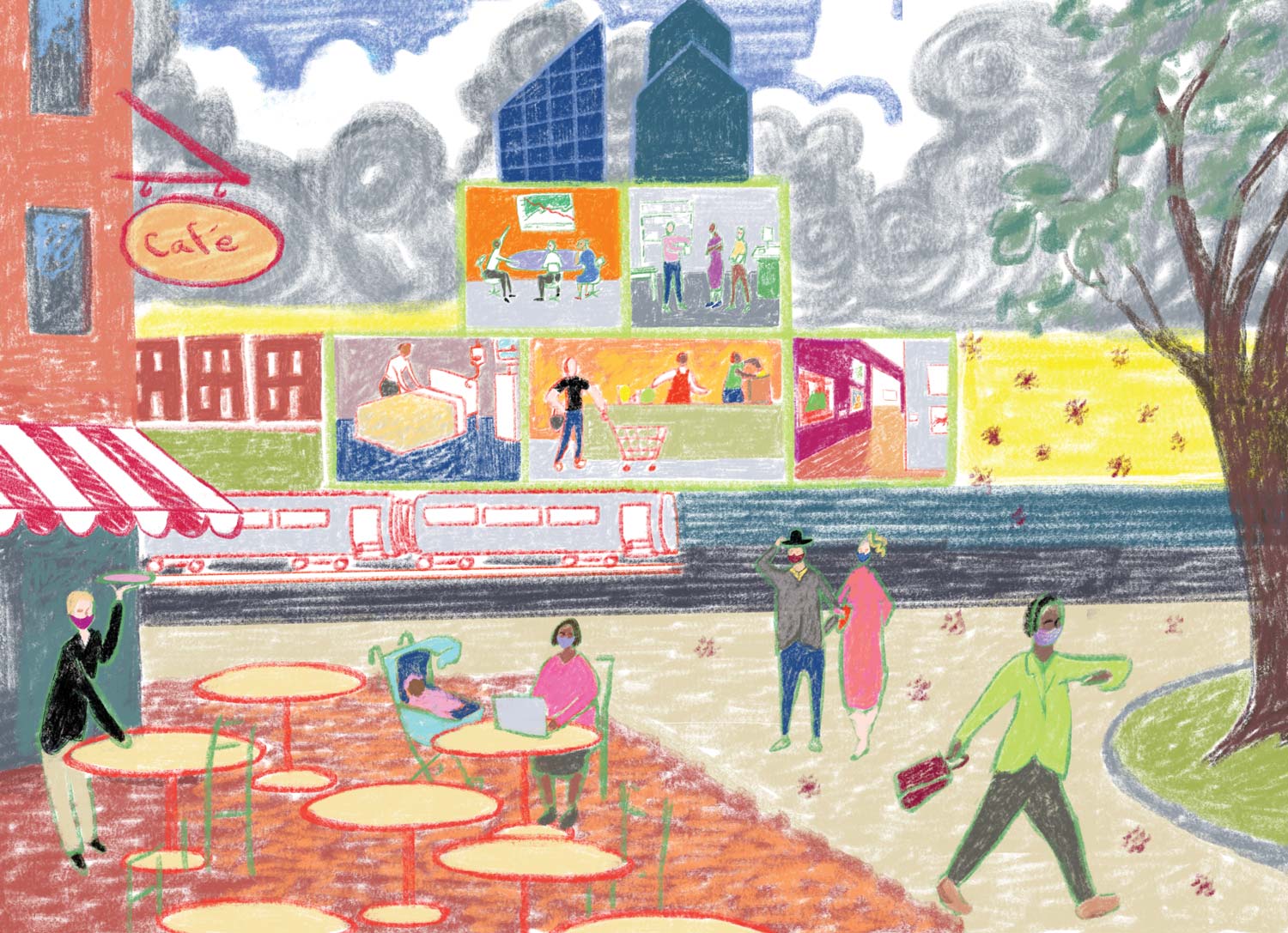
Ripple Effect
To help untangle the complexities of how the U.S. economy will be affected for years to come, Swarthmore economists share perspectives from their areas of expertise. They examine how the pandemic has widened income inequality, the toll it has taken on America’s most vulnerable workers, and how it has frayed at the fabric of the American city.
illustrations by Phillip Stern ’84
The Field Cluster
How has the pandemic affected American cities?
Will working from home become a more permanent feature of the economy? No one knows. But a fascinating angle of this will be any lasting effects on our traditionally congregated work in downtown office buildings. And if there are, what are you going to do with all that space? Some property owners in New York have already moved to convert them to apartments, thinking they can make more money that way now.
What would be the repercussions of that?
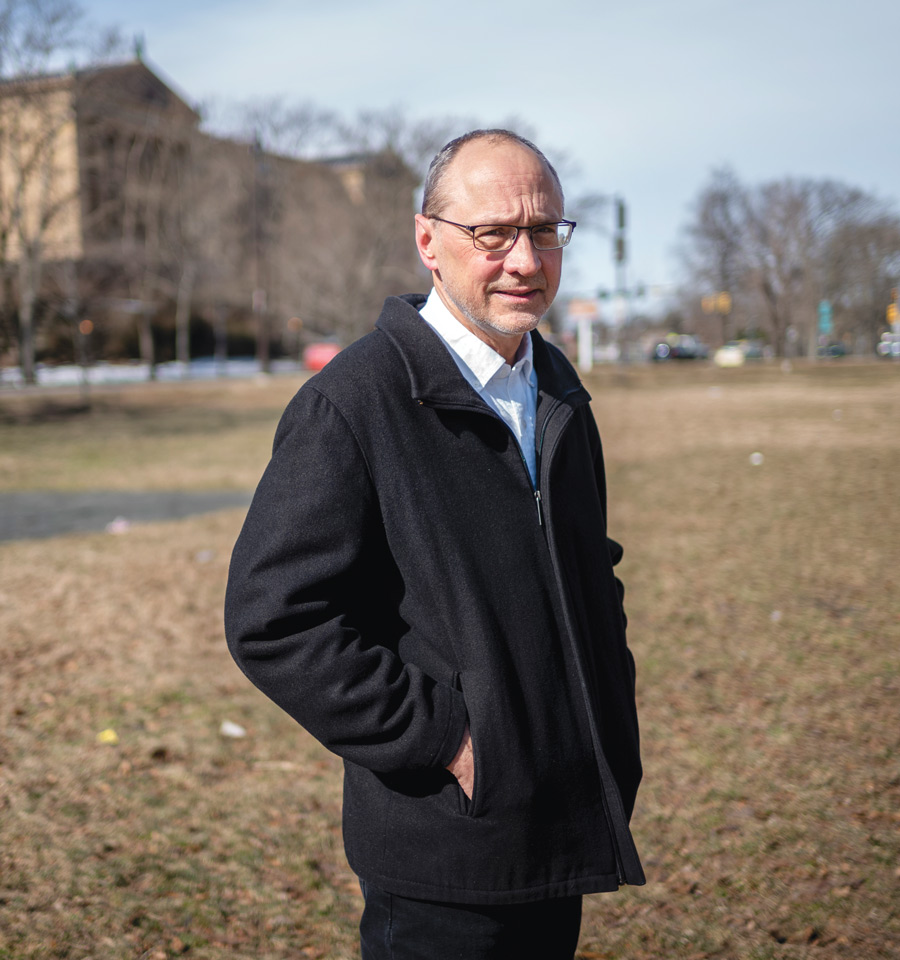
In Search of Solitude
What will continue to draw people to cities?
That got lost during the pandemic. People avoided mass transit, and many left their apartments to move to the suburbs, temporarily or even permanently. Will it be a lasting effect? You can talk to our students who are graduating. I always used to joke with them; you’d never hear a student say, “I’m going to go live in Reading, Pennsylvania.” They just don’t do that. They all want to go to Boston, Washington, New York, Philadelphia, whatever. They all go to big cities. But now they might be inclined to go somewhere with more natural beauty, more solace, more space.
I talked about cities and productivity that comes from density or agglomeration, this interaction. The other thing that comes from density are the consumer benefits. Dense cities can support music venues, theaters, unique restaurants, and other places people like to go. Those amenities attract people to cities, especially walkable neighborhoods. Of course, that’s not happening right now. I’m optimistic it will come back. It may take time, but I think that while the suburbs are wonderful for parking your car, they’re not the most exciting place for a young person or people who want to surround themselves with vibrancy. There’s still no competition for a dense city.
Learning by Design
So say the students in Behavioral Economics, a course taught this January by Associate Professor of Economics Syon Bhanot. The students (in groups of four or five) designed behavioral economics experiments that will be implemented with real subjects by the Busara Center for Behavioral Economics, a research partner in Nairobi, Kenya.
“I had done research at Swarthmore, but it was all theoretical,” says Martin Rakowszczyk ’22, an economics and linguistics major from Rockville, Md. “I’ll definitely look back fondly on getting a chance to design experiments that are actually carried out in real life.”
“I think this sort of material, and methods, are hard to learn purely in the abstract,” says Bhanot. “Especially in the remote environment, I feel it is important to apply the concepts in a concrete way — even if it does require students to think fast.”
Faster than ever, in this case. The course took place in Swarthmore’s January term (J-Term), an optional and online-only term offered for the first time this year to help bridge the gap between the fall and spring semesters that was widened by the global pandemic.
More than 120 students enrolled in the course, which mixed prerecorded and live lectures with guest speakers (including faculty from Harvard University, the University of Chicago, and Stanford University) to foster immersive experience.
In designing experiments, some students focused on the familiar, from the economics of risky decisions people make in the age of COVID-19 to how best to encourage healthy food choices. Others veered from areas of personal experience to study things like how Nairobi residents process information about crime in the city, or how to encourage the use of energy-efficient cook stoves in Kenya.
This far-flung collaboration would not have been possible without support from the Lang Center for Civic and Social Responsibility, the Provost’s Office, the Economics Department, and the Global Studies Program — a collection that speaks volumes about the College’s willingness to support students, advance pedagogy, and engage with communities, says Bhanot. — RYAN DOUGHERTY
income inequality
The Congressional Budget Office recently predicted that the U.S. economy will return to its pre-pandemic size by the middle of this year. And yet many experts worry about a “pandemic divide”: tens of millions of Americans in as good or better financial shape than they were at this time last year, and just as many or more devastated by the virus. What is top of mind for you in measuring this economic impact?
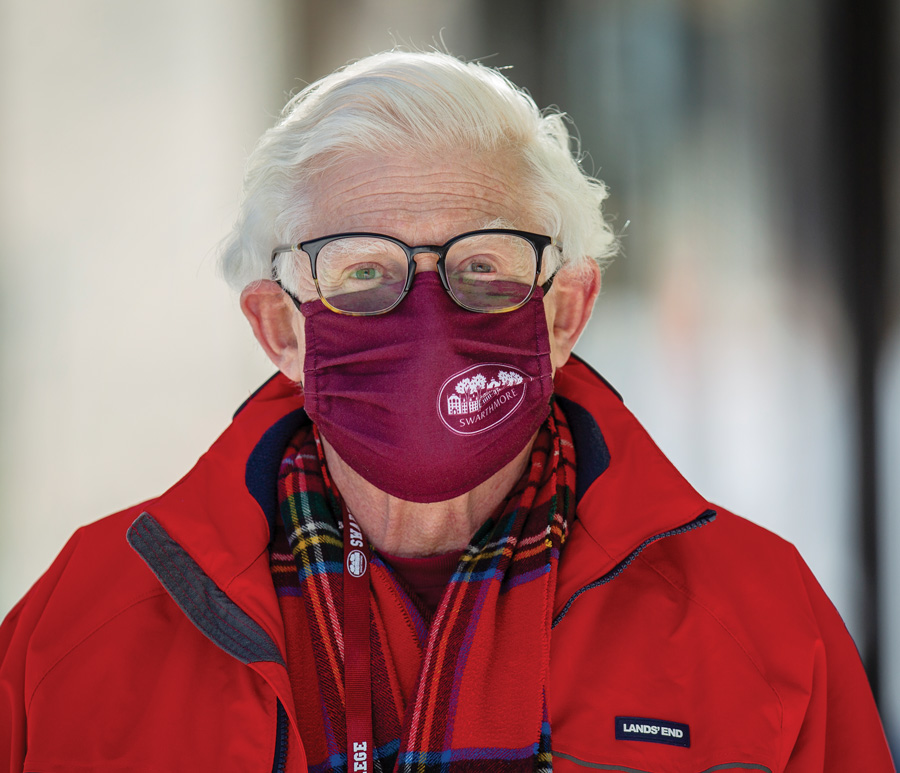
But on the economic front, the hope is that once the vaccines are widely distributed, people with reserve savings will start spending again. That way the people in the hardest-hit sectors, such as waiters and flight attendants, can at least get back to work. I’m very optimistic that the economy will bounce back — that this whole thing was really a medical problem, not an economics problem. In fact, with the new stimulus package, my biggest worry is that the economy will bounce back too fast and generate inflation.
A Phenomenal Disconnect
How do we understand the tremendous rise of the stock market in the past year, even as cities and town centers closed up and millions were losing their jobs?
That was always true, but now it’s right in everybody’s face. There are a lot of reasons for this disconnect, some of them pretty technical. But there is a phenomenal disconnect. Stocks are a very imperfect barometer of future profits, and future corporate profits do not bear a close relationship to the well-being of the average American. Stocks are overwhelmingly owned by the wealthy and mutual funds. The low interest rates have helped the financial sector, too, big time, more than they have mainstream Americans. Then there are the corporate tax cuts: Companies just took the money and bought back their stock, raising prices. And some of the stocks have just gone gangbusters.
That leaves us with two things to be confronted in the U.S. economy: inequality and slow growth. While inequality may be politically difficult to deal with, slow economic growth is a much more complicated thing; you can’t pinpoint the exact reasons for it. Even when the economy is fully employed, it is not growing fast enough in terms of per capita GDP to raise people’s standard of living. So once the economy recovers, these should be the two priorities of the Biden administration.
A Win for the War on Child Poverty
Given that the pandemic disproportionately hit low-income and low-resourced households, exacerbating the already large disparity in the economy, this relief package has been called a game-changer as it is expected to have a larger reduction in poverty for Black and Hispanic children.
More than 10 million children live below the poverty line in the United States, 3 out of 4 of whom are children of color. Living in poverty is associated with a number of health risks as well as poor cognitive skills, depression, and food insecurity. When a child is exposed to such a disadvantaged environment while growing up, the negative consequences carry over to adulthood, making it harder to leave the poverty cycle and undermining overall intergenerational mobility.
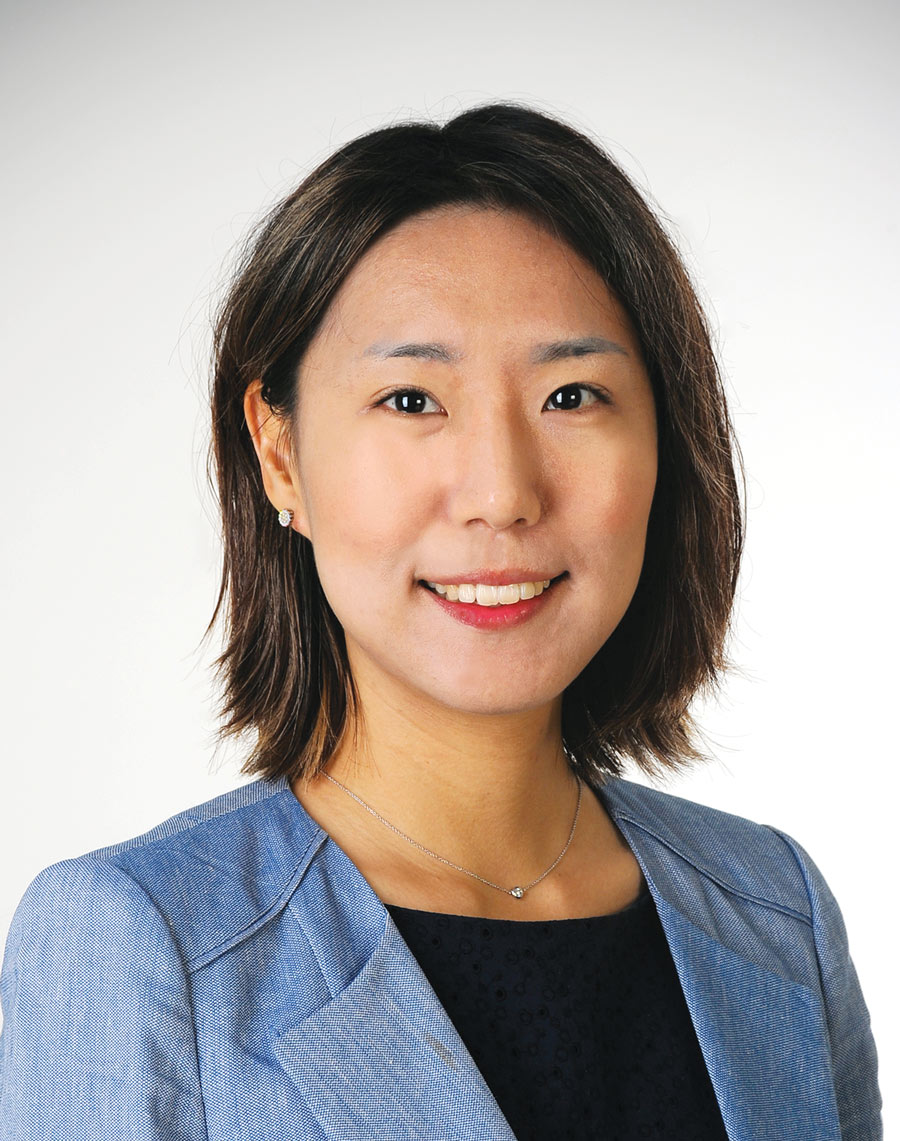
Combined with the existing evidence in economics, the expanded child tax credit would not only combat child poverty immediately, but also win the long-term war on poverty and improve intergenerational mobility.
A Labor Force in Jeopardy
In a recent article in The New York Times, you said that even if the economy adds jobs as the coronavirus risk fades, “the rebound won’t help the people that have been hurt the most,” who might have a difficult time reinventing themselves. Where might we expect to see this most?
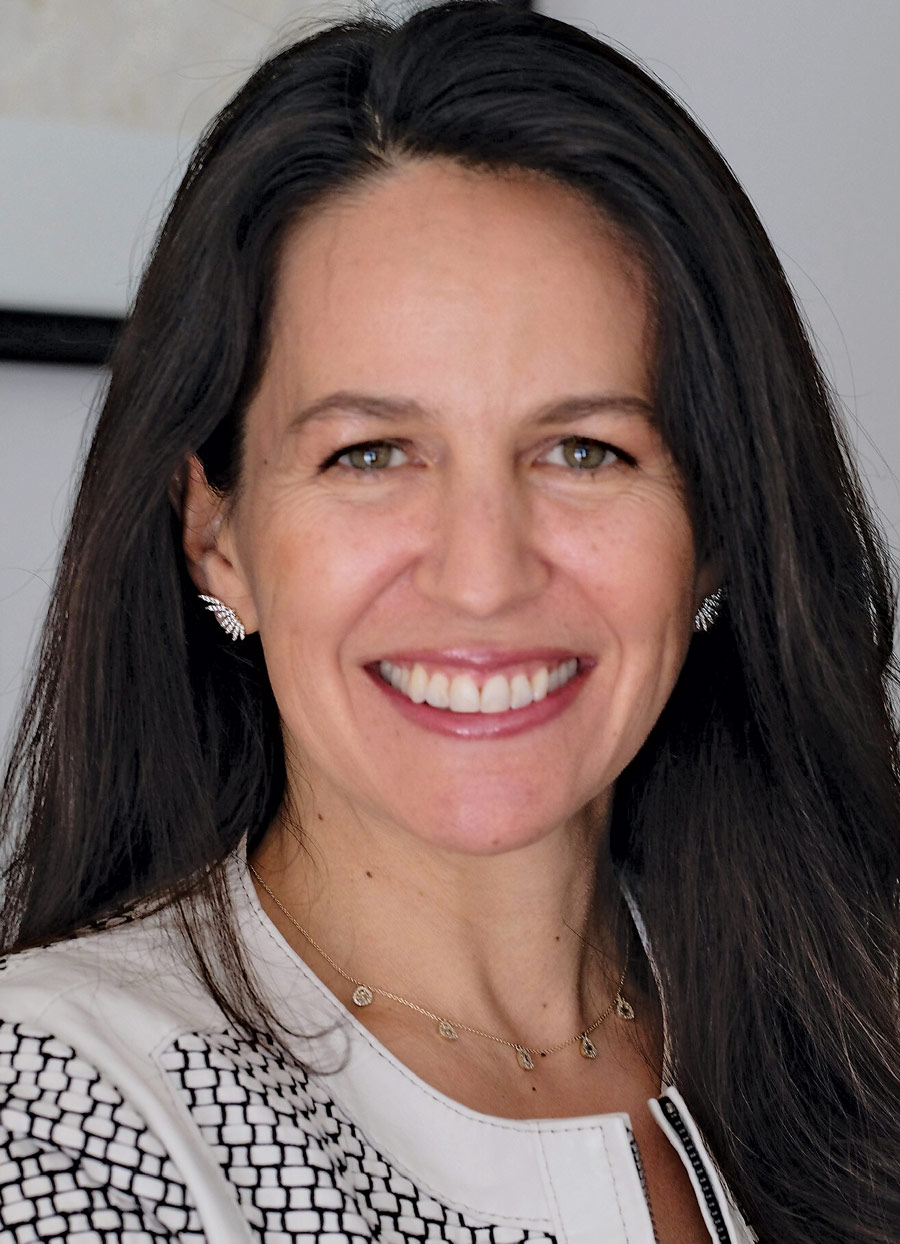
Worryingly, we have started to see companies forced to learn how to operate and do business with fewer employees. That’s going to be hard to unlearn, and it means that many workers who lost their jobs are going to have a difficult time getting back to their same jobs. And the longer they are out, the harder it becomes to re-enter, and the more detrimental it becomes for them and the next generation.
Here, There, Anywhere
Is it possible this economic downturn may prove unique in terms of offering these vulnerable workers new opportunities?
